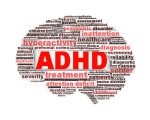A common trend when chasing the numbers of abuse with regards to prescription medication is to focus too closely on teens and students who are already in the midst of abuse. Oftentimes preventative efforts are wielded ineffectively because the abuse is early enough that negative consequences haven’t yet precipitated out of poor decision-making and residual usage. If the best course of action when solving any problem is to attack the issue at its source, where do we start when it comes to a generation of youngsters who are born into a world eager to place them into generalized strata of developmental issues, ranging from autism to attention deficit hyperactive disorder (ADHD), to a plethora of other syndromes and deficiencies. As it stands, all roads lead to a promised land of pills and treatments lauded with the ability to “cure” them of any and everything, dispensing with any stop gaps that might prevent misdiagnoses or over-prescribing. According to a recent study conducted by the University of Michigan, evidence suggests that efforts to prevent expedited misuse of ADHD drugs and other prescription stimulants should begin in middle school.
Says study author Elizabeth Austic:
“We need to have a realistic understanding of when young people are beginning to experiment with stimulants, so we can prevent them from misusing for the first time. To prevent someone from using for the first time is often more cost-efficient and effective than trying to intervene once they have done it, whether a few times or for years.”
According to an article posted by U.S. News, Austic and colleagues analyzed data from more than 240,000 people ages 12 to 21. Peak ages, ranging between 16 and 19, are in concordance with data pointing to teens who abuse medication without a prescription to get high, lose weight, or for other reasons. Besides Ritalin and other ADHD meds, these include prescription diet pills and medicines that contain methamphetamine. Perhaps not surprisingly, diet pills were most often abused by female students while Adderall was the drug misused most often by males.
The list of avenues by which prescription med abuse can begin is a lengthy one, and almost all are obvious: pressure (peer, on oneself), experimenting with pills left over from surgeries or siblings’ deficits, finding current prescription medications in family medicine cabinets, experimenting with friends, and even buying the drugs on the streets illegally. Perhaps not so obvious can be the misdiagnosis by a psychiatrist or physician, which can lead to a dependence that might otherwise have never existed. Furthermore, while prevailing attitudes among younger individuals toward more illicit drugs such as heroin or cocaine pivots on the understanding that a bad hit can lead to overdose and death, what makes prescription drug abuse so especially dangerous is a lack of understanding as to just how addicting said medications can be. In a July issue of the journal Drug and Alcohol Dependence, researchers said problems posed by misuse include hallucinations, suicide, and even sudden death.
Notably, when many think of Ritalin or Adderall, they conjure up images of college students cramming for exams. According to Austic, they just don’t realize how prevalent the problem is among younger ages.








